Results 1 to 10 of 10
 18Likes
18Likes
Thread: Newbie ID and age question about stubtail
-
03-11-2016, 11:28 PM #1
 Newbie ID and age question about stubtail
Newbie ID and age question about stubtail
This just came in the post and I know nothing about why it went cheaply, so would someone fill me in please? The case is embossed with a DW in a few places, and appears quite old, so old I really can't be sure of the materials involved. The horn scales are in better shape than I had imagined and will be headed for neatsfoot shortly. An info will be appreciated.

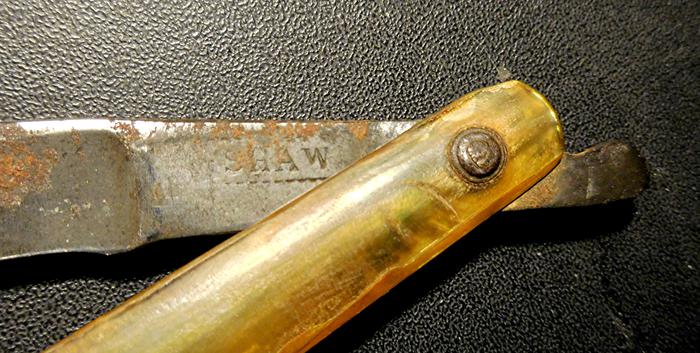
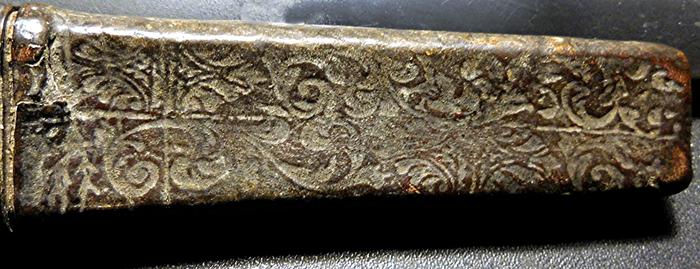
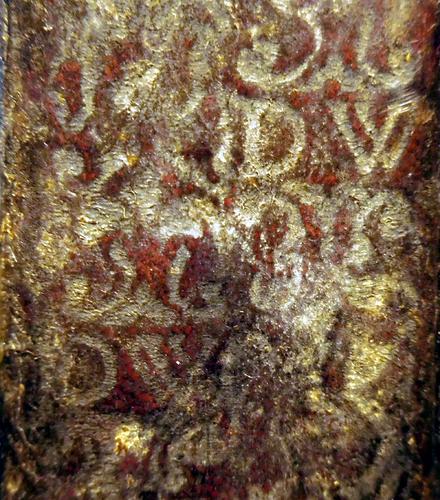
-
The Following User Says Thank You to Oldnick For This Useful Post:
Iceni (03-12-2016)
-
03-12-2016, 12:53 AM #2

http://straightrazorpalace.com/razor...tml#post550136
That should clear up the stamping. It's either I-SHAW or J-SHAW.
No idea on the age, It's early. Older than 1810 at that is the regarded year for shoulders to appear like a modern razor has. It's probably cast steel rather than drop forged that'll explain the good general condition of the metal. Clean it up and get it honed!
It could well be as old as the Declaration of Independence! July 4, 1776.
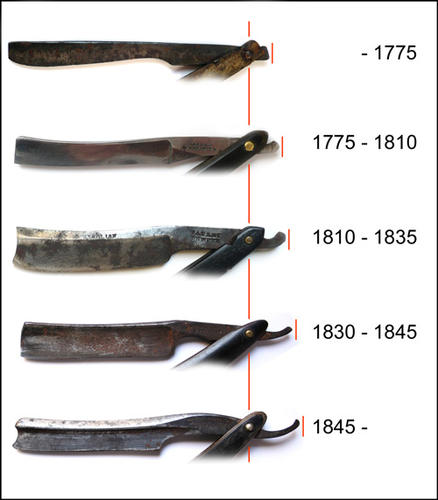
Last edited by Iceni; 03-12-2016 at 12:58 AM.
Real name, Blake
-
-
03-12-2016, 02:11 AM #3

I had studied those two links before, but couldn't understand why I got it for <$40 unless I was missing something. The strike on the stamping doesn't even hint at the J or I dash SHAW, and only the bottom line and a whisper of the right hand side of a box around is visible under considerable magnification.
-
03-12-2016, 02:33 AM #4

I've seen a lot of those old stubtails with very crude, and sometimes partial, stampings. Another thing about the 1700s and very early 1800s razors is straight scales with no curve at all. According to Robert A. Doyle the curve started developing in the scales around the time that distinct tangs came in.
Nice example of a 1700s piece, especially if that chart is accurate. I would've thought that to be blade wear, but it may have been forged in that profile. BTW, I couldn't say where it is posted, but IIRC Neil Miller wrote about the material that those razor boxes were made out of and ......... IIRC ....... could be pressed paper, or maybe leather.Be careful how you treat people on your way up, you may meet them again on your way back down.
-
03-12-2016, 02:44 AM #5

Appears to be laminated paper or extremely thin wrapped wood veneer body with a very thin embossed leather wrapped over all -- or not. A bit of microscope work could decide.
-
03-16-2016, 05:04 PM #6

It's very late 1700's or early 1800's. Maybe 1795-1810. Most likely made by Thomas Shaw, who used the mark "SHAW" at the time.
John Shaw was in business then, but his mark was "CLAYTON".
The box is one of the very few old leather coffins I've seen. It was made by stretching thin leather over a form while wet, stamping the designs in and boiling it until it became rigid.-Zak Jarvis. Writer. Artist. Bon vivant.
-
-
03-16-2016, 05:15 PM #7
-
The Following User Says Thank You to ScienceGuy For This Useful Post:
Oldnick (03-16-2016)
-
03-16-2016, 05:25 PM #8

Thanks for the info Zak, I thought I remembered Neil mentioning leather razor coffins, but I'd never be able to find the reference.
I wondered about that. In 1980, when Robert Doyle wrote that, he was about the only resource in print AFAIK.Be careful how you treat people on your way up, you may meet them again on your way back down.
-
The Following 2 Users Say Thank You to JimmyHAD For This Useful Post:
Oldnick (03-16-2016), Voidmonster (03-17-2016)
-
03-16-2016, 05:39 PM #9
-
03-16-2016, 11:42 PM #10

[QUOTE/]The box is one of the very few old leather coffins I've seen. It was made by stretching thin leather over a form while wet, stamping the designs in and boiling it until it became rigid.[/QUOTE]
I didn't think that it had the same feel and look as the treated paper ones, and the way it is wrapped and the thickness also seem markedly diferent. Meanwhile, I'm bringing it back slowly by hand
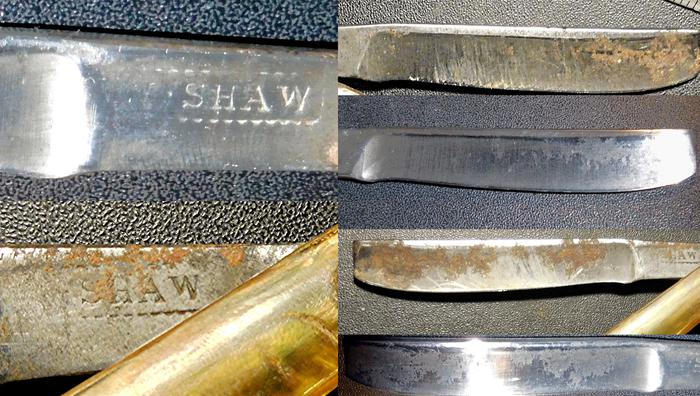
-
The Following 2 Users Say Thank You to Oldnick For This Useful Post:
Euclid440 (03-17-2016), Voidmonster (03-17-2016)


 LinkBack URL
LinkBack URL About LinkBacks
About LinkBacks






 Reply With Quote
Reply With Quote



